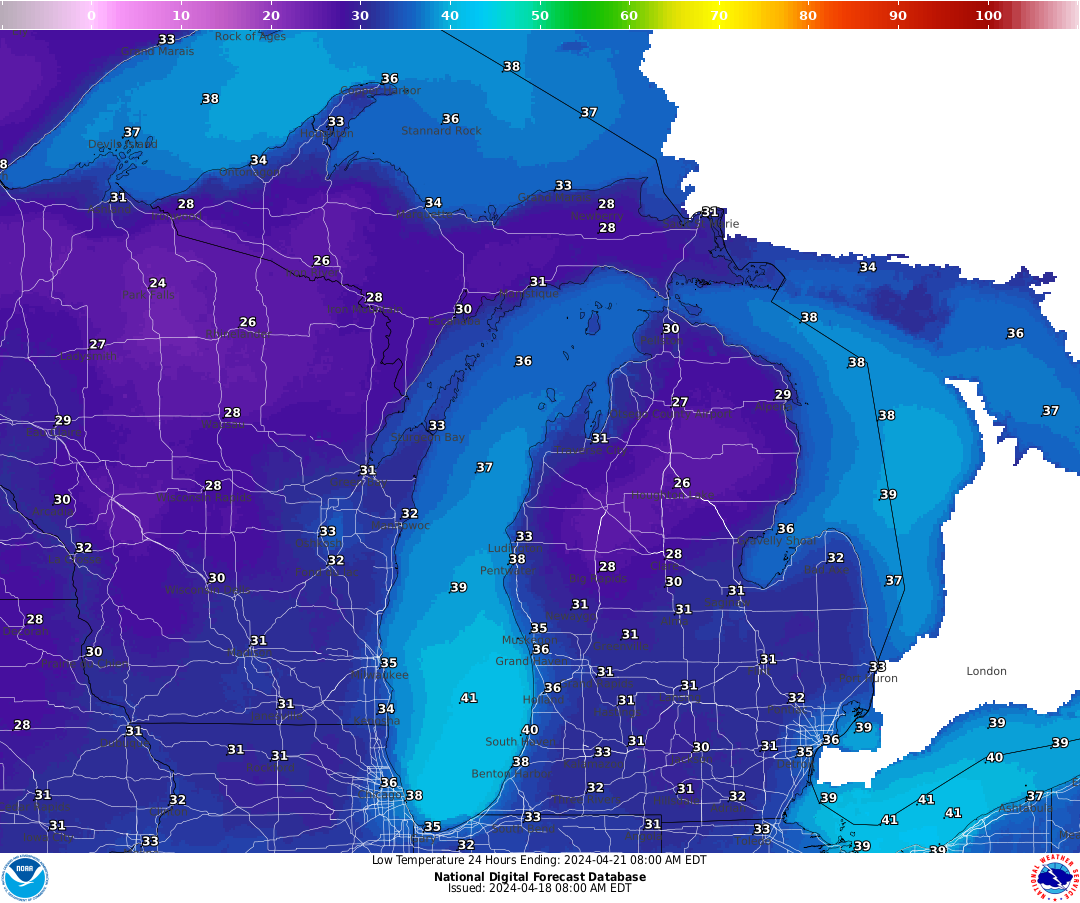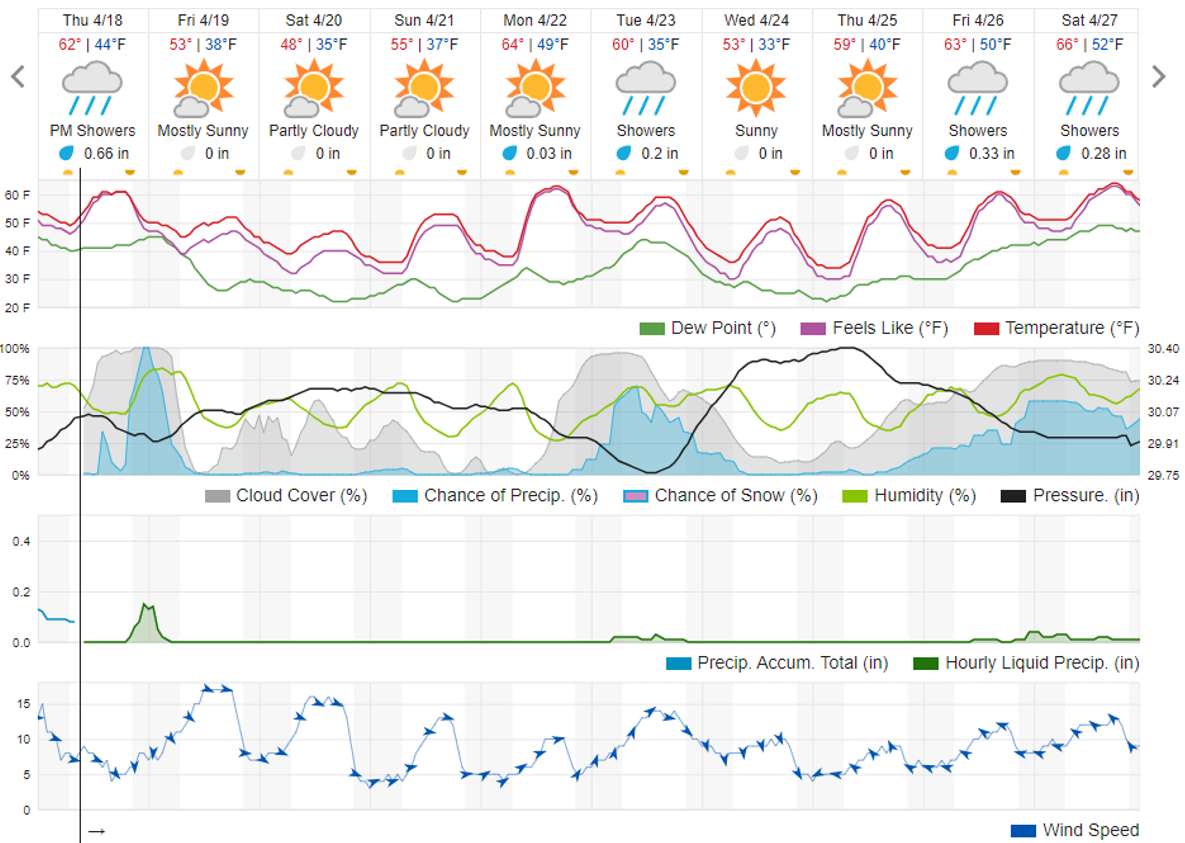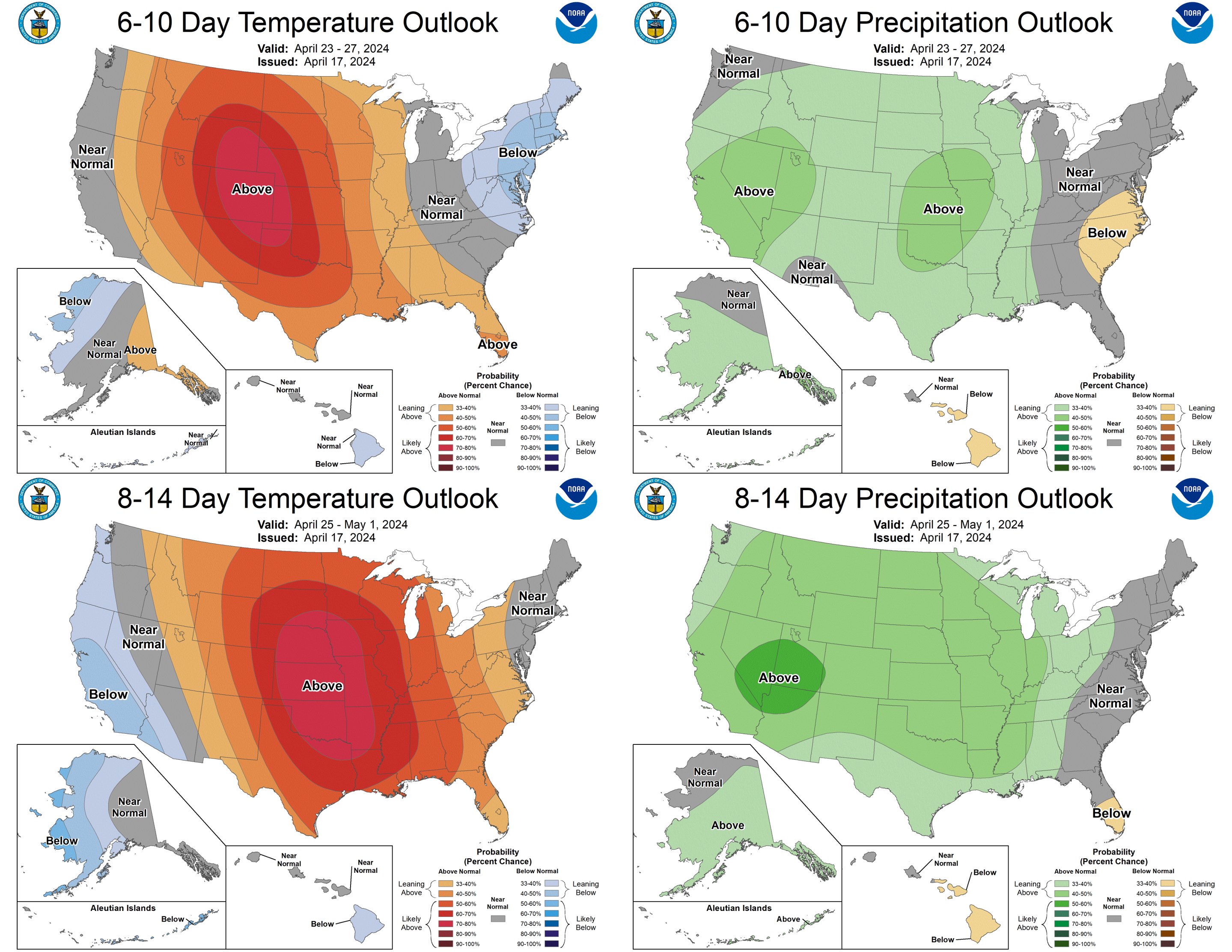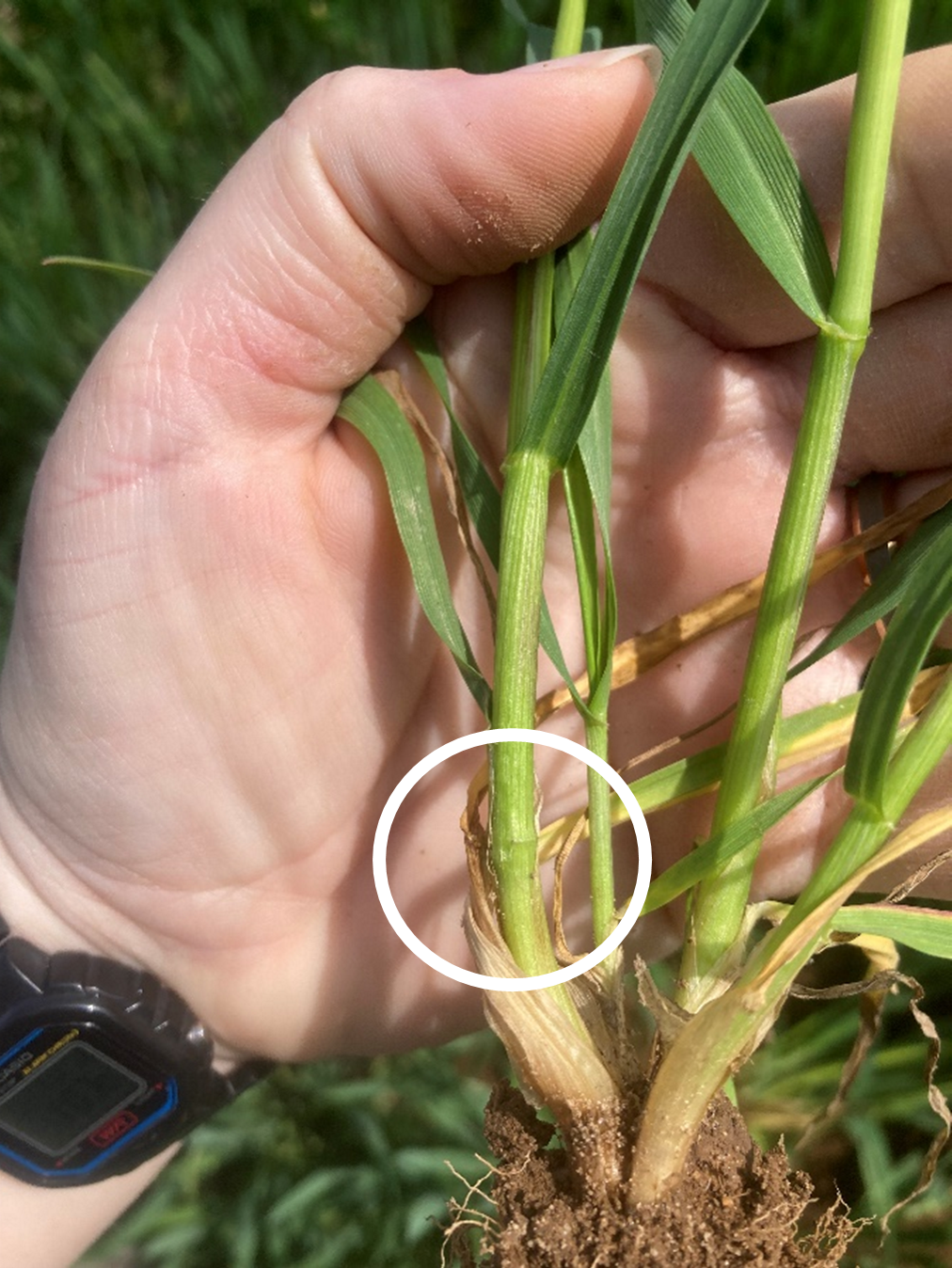Southwest Michigan field crops update — April 18, 2024
Warm temperatures lead to cover crop burndown, wheat jointing and potato planting.

Weather
The sunny, warm weather nearly all this past week led to a steady increase in soil temperatures and air temperatures being about 8–12 degrees Fahrenheit above normal throughout the state. That pattern is not forecast to continue. The passing of another cold front will bring precipitation overnight Thursday, April 18, and the ensuing high-pressure system with Canadian-origin air mass will bring a significant cooldown this weekend and into next week, including a risk for frost or freezing temperatures. Although next week will be cool and wet, it is expected to trend slightly warmer until returning us to above normal temperatures by the last week of the month.



Crops and pests
Soybeans and corn are expected to start moving here soon. This past week, conditions were great for getting sprayers across fields to burn down cover crops and for tilling fields blanketed in winter annuals. Very little planting has occurred so far, and with cooler temperatures forecast next week, that is unlikely to change quite yet. Seed treatment and some spring cultivation are ongoing.
Winter wheat is at Feekes 6 (jointing), where the growing point has now moved aboveground. With the possibility of freezing temperatures this weekend, there has been some concern about how it will affect the wheat. Dennis Pennington, Michigan State University Extension wheat specialist, said that at this point, wheat can survive temperatures down to 24 F for a few hours, so southwest Michigan should be well ahead of that threshold. In short, the cooler temperatures coming up shouldn’t damage the wheat.

With the past rainfall and the forecast rainfall, fields are more susceptible to nitrogen loss. This comes at an especially critical time as nitrogen uptake will increase with stem elongation, so it’s important to watch for early symptoms of deficiencies. Yellowing of plant leaf tips, and particularly of older or lower leaves on the plant, are often the first indication. Powdery mildew has started up near Allegan County in lush fields, so that is another thing to keep in mind as you scout your wheat this week.
Potato planting started a few weeks ago and continued this week with a short run of dry weather. At the beginning of the week, potatoes were considerably behind normal on planted acres and are still behind historically, although the gap has been narrowed, with potatoes sitting at an estimated 50% planted. The cooler temperatures forecast for next week will hopefully allow growers to get most of their remaining potatoes into the ground at a lower seed piece decay risk, although the moisture this weekend and next could slow progress down significantly.
Black cutworm moths are present in the state. Bucket traps in Berrien County near Berrien Springs, Michigan, and St. Joseph County have caught the following:
|
Date |
Berrien 2 |
Centreville 2 |
Sturgis 2 |
|---|---|---|---|
|
4/8 |
0 |
2 |
1 |
|
4/15 |
0 |
12 |
4 |
|
Total |
0 |
14 |
5 |
One true armyworm moth was trapped in Berrien County this week.

Optimizing planting decisions, presented by Michigan State University (MSU) cropping systems agronomist Manni Singh, was the topic for the MSU Extension Field Crops Virtual Breakfast this week. Singh spoke about factors that affect planting optimization decisions, including soil temperatures, soil moisture, planting date, planting rate and row spacing. He said that soil moisture may be even more important than soil temperatures when it comes to making planting decisions because planting into fields that are too wet can cause a host of problems for the entire season. Recordings of this and all the Virtual Breakfast meetings are closed-captioned and available at the Field Crops Virtual Breakfast webpage and the MSU Extension field crops team social media platforms: Facebook, Spotify, YouTube, Apple Podcasts and Twitter.



 Print
Print Email
Email




